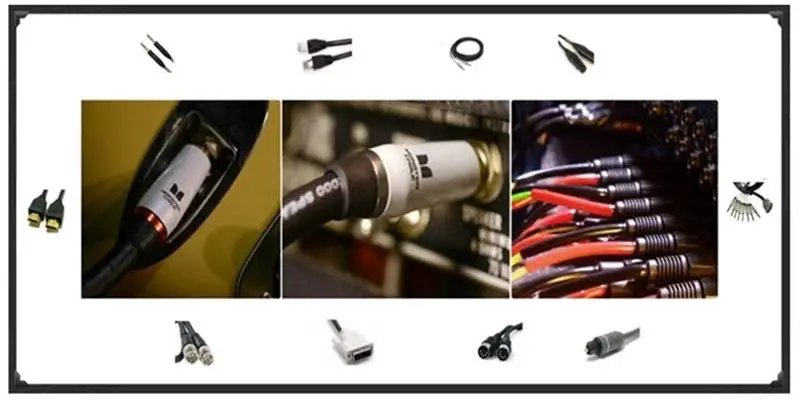
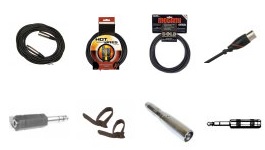 Cables & Cords: You can never have enough of cables, especially if your interest is music technology.
Cables & Cords: You can never have enough of cables, especially if your interest is music technology.
Introduction
Any musician who performs on stage needs to connect their music instruments or mics to the amplifiers. Besides, you also need cables to connect the various equipment together.
Another common requirement of any digital piano or keyboard player (or any other electric instrument) is to connect the music instrument to computer (gradually becoming keyboard to iPad), and you need a cable to make the connection.
In fact, there are several analog and digital connectivity solutions available for the musical instrument, broadcast, theater, and professional audio/video industries. These cables/cords are manufactured to meet the requirements of today’s professional.
Instrument Audio Cables: Basics for Dummies
Analog vs digital cables
- Analog Cables: Information is tranmitted using stream of electricity
- Digital cables: Information is tranmitted in binary form (1’s and 0’s)
Analog Cables: Types
- Balanced: Immune to noise/interference. Have 3 wires: Signal (+), Signal (-), Ground
- Unbalanced. Have 2 wires: Signal, Ground (the third wire in balanced cable makes noise-cancellation possible)
These are used to transfer the following levels of audio signal:
- Line Level (balanced): Standard signal strength of all pro audio equipment. Mic/instrument level signals are usually boosted to line level, before they enter the signal chain.
- Mic Level (balanced): Mics use a standard microphone cable, which is boosted to line level using a mic preamp.
- Instrument Level (UNbalanced): Instruments like electric guitar/bass use a standard guitar cable, which is boosted to line level using a direct box.
Analog Connectors
A balanced analog cable uses 1 of 3 connectors (that carry signals from positive, negative, and ground wires):
- XLR Male – Has 3 pins, connects to various hardware inputs.
- XLR Female – Has 3 holes, Connects to microphone, various hardware outputs.
- TRS – Connects to both inputs AND outputs. TRS has 3 surfaces known as Tip, Ring, and Sleeve
Unbalanced analog cables typically use only one connector – TS connectors (seen on instrument/guitar cables).
XLR Cable Connectors
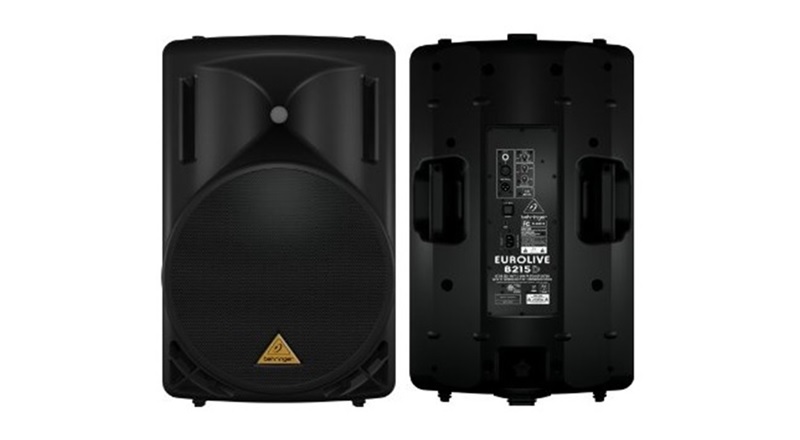
XLR cables are usually less susceptible to external noise / interference and have durable construction.
You don’t want your high-end condenser or dynamic microphone to be paired with some cheap cable. That is why it is important to invest in good quality XLR cables.
An XLR cable is commonly used to connect mics to balanced output gear. With good quality, well-balanced XLR cables, you will not experience any noise or radio interference because these have better shielding and connectors. You get XLR cables of different lengths; also, the thicker the cable, the better is usually the signal support.
What to Buy
Here are the more popular types of cables include (there are many more actually):
Instrument Cables . Microphone Cables . Cable Accessories . Interconnect Cables
Speaker Cables . Live Audio Snakes . MIDI Cables . Insert Cables
Digital Audio Cables . Patchbay Cables . Pedal Cables . Adapter Cables
Headphone Extension Cables . Power Cables . Wireless System Cables
Lighting Cables . Computer Cables . Bulk Audio Cable-Plugs-Plates
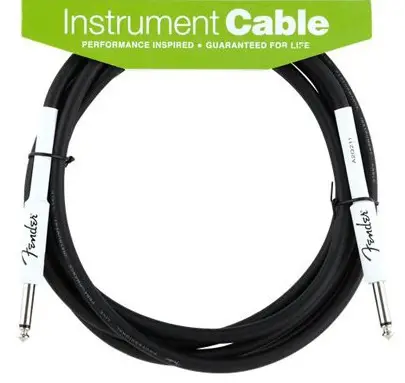
Instrument Cable
An Instrument cable is usually a 1/4-inch cable that you need to plug in your music instrument; these are used to connect your music instrument to amplifiers. When performing on stage, its always better to have an extra instrument cable handy. The better instrument cables do not tangle, there’s no buzzing or humming (the cheapest ones are prone to buzzing), have serviceable, metal plugs which makes them better suited for touring, they have oxygen-free copper conductors for better signal clarity. You get instrument cables ranging from right-angle L-connectors to straight plugs.
Most electric instruments (wind, stringed, percussion instruments – guitars, violins, organs, banjos, electric pianos, basses) use this type of cable. Wherever you see an amplified sound being produced, its very likely that a guitar cable is being used.
Non-instrumental devices like stereos, studio recording devices, PA systems, headphones, speakers, microphones etc. also use this type of cable.
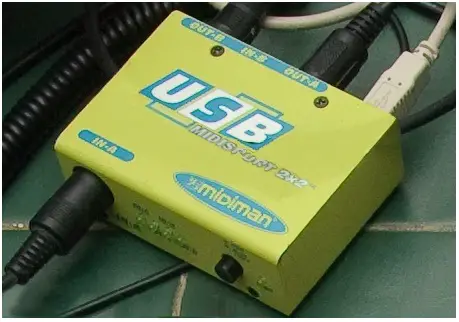
Midi Interfaces
Easily connect keyboard/MIDI controller to your computer. These interfaces convert 5-pin DIN MIDI to the standard 7 easy-to-use USB connectors. Read more on Midi interfaces.
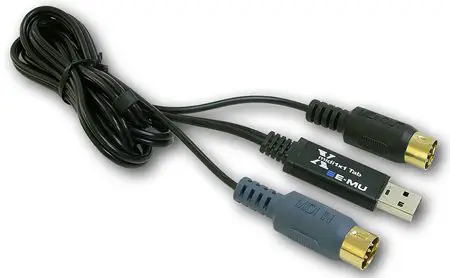
Midi Cables
Connect your MIDI gear using reliable MIDI cables, you also need this to get your studio inter-connected.
Headphones Extension Cables: Extension cables for your Headphone to let you hear further away.
Interconnect Cables: More options to create the right cable connections for your setup.
Cable Accessories: Have a studio at home? You might need some accessories as well such as plugs, connectors, etc.
- MIDI Cables
- Digital Audio Cables
- Instrument Cables
- Microphone Cables
- Speaker Cables
- Computer Cables
- Interconnect Cables
- Cable Accessories (adapters, ties, etc.)
Its important to understand which cables and connectors to use. If the wrong cables or connectors are used, equipment may not operate correctly, or could even cause damage to equipment.
Buying Links
Plugging one cable into another seems simple enough, but doing it correctly requires some knowledge and takes some care. There are all kinds of cables and all types of connectors, and using the correct one can be critical to getting the best sound-and for protecting your valuable equipment. Many cables offer special extras such as angled connectors and silent switching, so be sure to compare both features and price when making your selection. From guitar and microphone cables to speaker leads and exotic adapters, this is your go-to source for all your audio cabling needs.
KeytarHQ editorial team includes musicians who write and review products for pianists, keyboardists, guitarists & other musicians. KeytarHQ is the best online resource for information on keyboards, pianos, synths, keytars, guitars and music gear for musicians of all abilities, ages and interests.



Leave a Reply